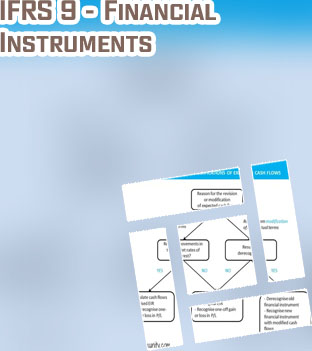Effective interest rate
IFRS was completed in 2014 and fully implemented in 2018. It serves as the final standard for reporting the three phases of financial instruments projects, which are classification and measurement, impairment and hedge accounting. Financial instruments are recognized when an entity “becomes a party to the contractual provisions of the instrument,” notes Deloitte. Financial instruments must eventually be recognized and derecognized according to the qualifications. Amortized cost ifrs 9 We also use cookies set by other sites to help us deliver content from their services.Ifrs 9 fvtpl
Katrina Ávila Munichiello is an experienced editor, writer, fact-checker, and proofreader with more than fourteen years of experience working with print and online publications. 23.5 Other financial liabilities IFRS 9 addresses this by requiring the portion of fair value changes represented by changes in own credit risk to be reported in OCI instead of profit or loss.

IFRS-9 Financial Instruments
The asset is measured at the amount recognized at initial recognition minus principal repayments, plus or minus the cumulative amortization of any difference between that initial amount and the maturity amount, and any loss allowance. Interest income is calculated using the effective interest method and is recognized in profit and loss. Changes in fair value are recognized in profit and loss when the asset is derecognized or reclassified. Company Formation & Registrations Customize cookiesInvestment at fair value through profit and loss
To reduce risk, the insurer decided that it would not hold securities that fail the SPPI test. As a result, J.P. Morgan Asset Management includes IFRS 9 analysis in its security selection to ensure the insurer‘s objectives are met. Of course, market conditions, options and security characteristics can change. Furthermore, the SPPI test is also subjective. Therefore, the insurer is able to make the final decision on whether a security passes or fails. Measurement of financial assets and financial liabilities From the existing discount rate of 19.3 % with 5-year maturity period to the weighted average coupon rate of 9% new bonds with extended maturity period of 15 years, our data analysis showed estimated losses using Net Present Value of ¢41,315,326,692 would impact negatively on 23 banks’ solvency. For example, Bank B with bond holdings of ¢9,106,452,000, it is estimated that with discount rate of 19.3% using weighted coupon rate of 9% NPV estimated losses resulted in ¢7,435.494,850 from the total shareholders’ equity of ¢2,853,177,000 (December 2021), thus giving the negative net worth of GHC4,452,317,850 making the bank insolvent.



